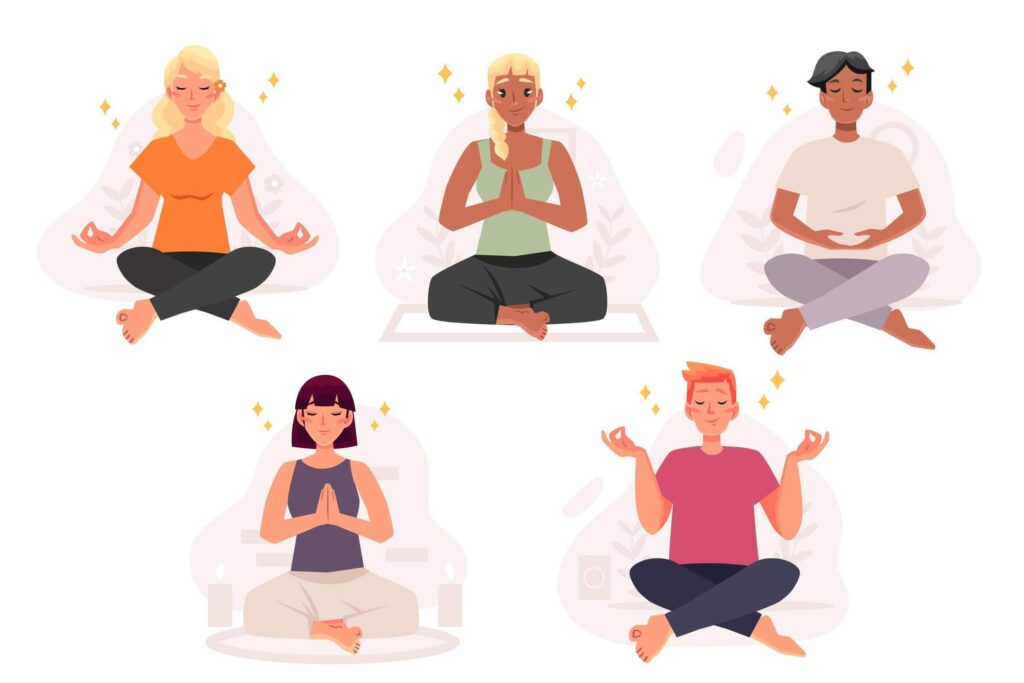What is meditation about?

Meditation or Dhyana is believed to have originated from an ancient system of yoga and certain other Hindu traditions. It is now being practiced in almost every religion in one form or the other to create inner peace and harmony.
Meditation is less about faith and more about training an individual’s awareness of self and surroundings. It also has nothing to do with becoming a different or a new person. Exploring the inner self is all that meditation is about.
True meditation is not something you “do”, but rather “be” it. Although there are various techniques of it for different aspects of life and finding the right type for an individual is very significant.
Types of meditation

Before getting into the types, ask yourself why do you want to practice meditation? Is it because you want to create a sense of calm and peace amidst your daily schedule or are you seeking spiritual growth or is it something you need to set your goals?
The generation in which we are living in has a greater need to reduce stress and other discomfort situations in life. This need can be fulfilled by many things but meditation being the easiest and most handy is definitely the right choice.
Every type of meditation has its own benefits, but they need different approaches and mindsets. It’s important to implement a practice that suits your needs and personality.
Below are the 8 best-known types of meditation practice:
- Spiritual
- Mindfulness
- Chakra
- Focused
- Movement
- Transcendental
- Visualization
- Loving-kindness
Keep reading to learn more about each of these techniques.

1) Spiritual meditation: This is practiced mostly in Eastern religions. In this particular type, you rely on the utter silence around you to connect with the Universe or higher source.
It can be done at home or any other place where there is total silence. It is beneficial for those who need silence or to seek spiritual growth.
2) Mindfulness meditation: This technique originated from Buddhist teachings and is more popular in the West. It involves awareness of “something”, be it your breath, bodily sensations, or feelings.
The important part of this practice is not to pass any judgments while doing it. Just pay attention and observe. It promotes total well-being and is often practiced to seek spirituality.
3) Focused meditation: It involves focus or concentration using any of the five senses. For instance, it can be your breath, listening to nature sounds (birds chirping or the ocean), or staring at an object (preferably a red dot on the wall or a candle flame).
This practice may be difficult for beginners to hold focus on. If the mind wanders, it’s important to come back and re-center your attention.
4) Chakra meditation: Chakra, an ancient Sanskrit word meaning “wheel” originated from Eastern yogic and tantric tradition. There are believed to be 7 important chakras in the human body from the base of the spine to the crown of the head. Every chakra has a different location and color.
This practice involves visualizing these chakras in the form of their corresponding color and location. Doing this helps stimulate these energy centers, thereby, bringing balance and well-being to the whole human system.
5) Transcendental/Mantra meditation: This type of practice is more engaged in Hindu and Buddhist traditions. It uses a repetitive sound or mantra in order to follow a pattern and eventually the mind becomes clear and still, helping you to get into a deeper level of awareness.
The sound can be a word or a phrase. Although the most common and powerful mantra generally used is “Aum” or “Om”. It can be uttered loudly or quietly. Most people enjoy this type of meditation because it’s a lot easier to focus on sound than their breath.
6) Movement meditation: This involves concentrating on the movement of your body along with your breath. For instance, when you’re gently waving your hands, center your focus on the movement of your hands while breathing in and out.
This has the effect to reduce levels of stress, anxiety, and physical pain and results in increased concentration.
7) Visualization meditation: This technique is focused on boosting feelings of tranquility, composure, and peace by visualizing scenes with positivity and profoundness. Visualization often requires you to use all the five senses to add as many details as possible.
Many people use this practice to imagine themselves succeeding at certain goals, which increases focus and motivation. Also, it can be used to enhance mood and reduce stress levels.
8) Loving-kindness/Metta meditation: This generally comes from Buddhist practices. It is used to strengthen the feelings of kindness, compassion, and love for oneself and others.
It usually involves opening the mind and body to receive love and compassion from others and sending the same loving energy to everything around you. This technique is ideal for those who hold resentment and anger within themselves.
Click on this link to read a related post on yoga and its importance
